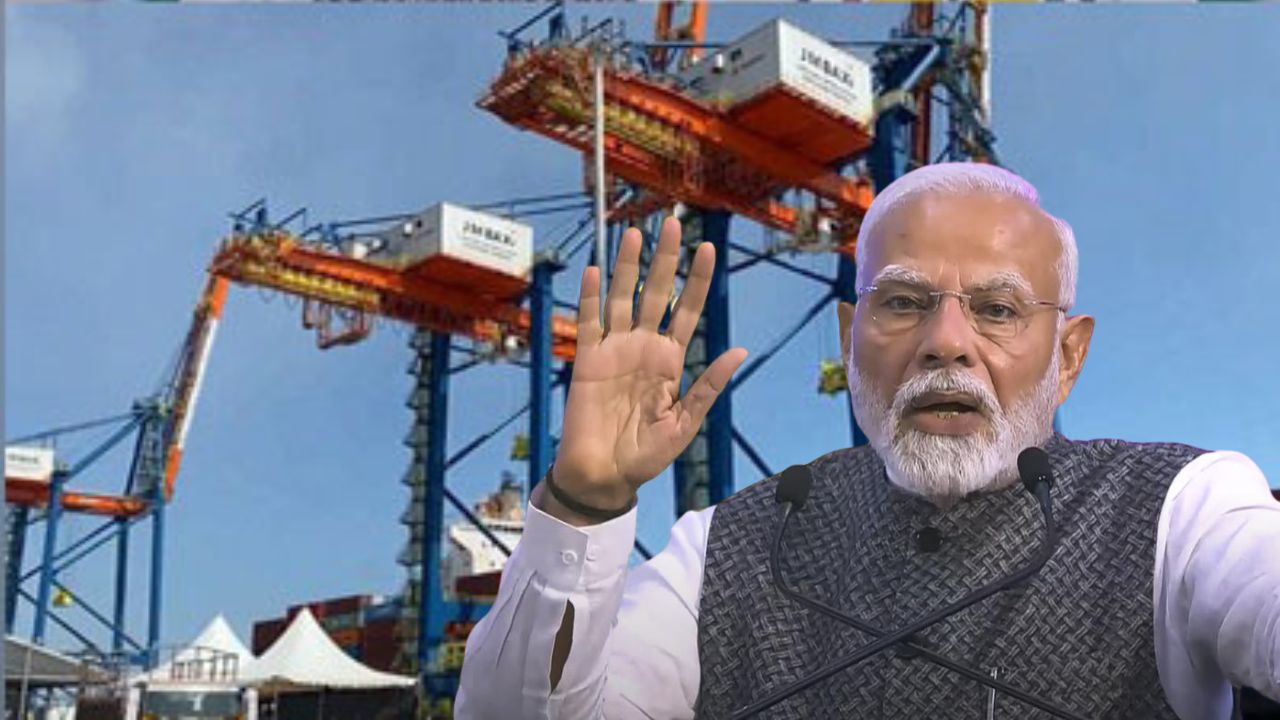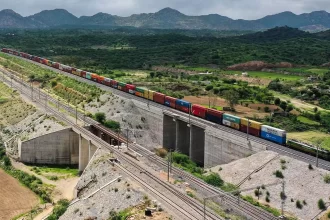India has been positioning itself as a major player in the global economy, and Prime Minister Narendra Modi’s recent inauguration of the Tuticorin Container Terminal is another milestone in this journey. The development signifies India’s increasing contribution to the global supply chain, an area that has been reshaped by geopolitical shifts, technological advancements, and economic growth. India’s efforts to bolster its maritime infrastructure through strategic initiatives like the Tuticorin Container Terminal highlight its aim to be a critical node in the global trade network.
This article explores how India is capitalizing on this infrastructure push, how the Tuticorin Container Terminal fits into the country’s broader strategy, and the role of India in shaping the global supply chain, while also analyzing the implications for various sectors.
1. Infrastructure Development: A Catalyst for Global Trade
The inauguration of the Tuticorin Container Terminal is emblematic of India’s commitment to improving its logistics and maritime capabilities. Located in Tamil Nadu, the Tuticorin port has been a significant gateway for India’s trade with Southeast Asia and beyond. By upgrading the port, the Indian government aims to accommodate larger container ships, reduce turnaround times, and enhance overall efficiency.
This infrastructure development is not an isolated event but part of a larger national strategy. India has been actively investing in its ports, roads, and rail networks under initiatives like the Sagarmala project. These projects seek to modernize India’s coastal infrastructure, which is critical for reducing logistics costs and boosting export competitiveness.
As India aspires to grow its manufacturing base under programs like ‘Make in India’ and ‘Aatmanirbhar Bharat,’ seamless connectivity to global markets becomes crucial. Efficient ports like Tuticorin will allow Indian manufacturers to connect more easily with global supply chains, making India a hub for global trade.
2. India’s Supply Chain Evolution: From Importer to Exporter
Traditionally, India has been viewed as a service-centric economy, excelling in areas such as IT, finance, and software development. However, the country is gradually diversifying into manufacturing, aiming to become an exporter of high-tech goods and intermediate products. The government’s focus on “Make in India” is geared towards transforming the country into a global manufacturing powerhouse by reducing dependence on imports and increasing exports.
The global supply chain disruption caused by the COVID-19 pandemic has opened up new opportunities for India. Many companies are looking to diversify their manufacturing operations and reduce dependence on China. This shift has created a window of opportunity for India to position itself as an alternative destination for manufacturing, especially in sectors like electronics, pharmaceuticals, and automotive.
Ports like Tuticorin play an essential role in facilitating this transition by ensuring the quick and efficient movement of goods. The container terminal will help in the handling of increased exports, especially as India steps up its manufacturing game.
3. Impact of Geopolitical Factors on India’s Role in Global Supply Chains
Geopolitical changes have a profound impact on global supply chains. The U.S.-China trade war and the subsequent recalibration of supply chains have resulted in many multinational corporations exploring alternate production hubs. India, with its large and growing workforce, democratic governance, and improving infrastructure, has emerged as a potential beneficiary of this shift.
India’s diplomatic relations with key trading partners have also evolved in recent years. Stronger ties with countries like the United States, Japan, and the European Union have facilitated more bilateral trade agreements and have made India an attractive destination for foreign direct investment (FDI).
The Tuticorin Container Terminal will likely play a strategic role in strengthening India’s export routes, especially towards these critical regions. Its geographical proximity to Southeast Asia and the Middle East enhances India’s connectivity to these high-growth regions, further boosting India’s appeal as a global trading hub.
4. Technological Innovation and Automation in Supply Chain Management
The Tuticorin Container Terminal’s modernization also reflects a broader trend in the use of technology to improve supply chain efficiency. The port is equipped with the latest technological tools such as automated cranes, advanced cargo management systems, and real-time tracking tools, ensuring faster handling and better transparency in cargo movement.
Automation and digitalization are revolutionizing supply chains globally, and India is keen to stay ahead of the curve. From blockchain-based supply chain management to artificial intelligence (AI)-powered demand forecasting, India is integrating these new technologies to streamline operations and make them more resilient to shocks. Ports like Tuticorin, with advanced infrastructure and automation capabilities, are key to making India’s supply chains more efficient and competitive.
5. Environmental Considerations and Sustainable Development
As India expands its logistics and trade infrastructure, environmental sustainability is becoming a significant consideration. The Indian government is keen on ensuring that the development of infrastructure projects aligns with sustainability goals. The Tuticorin Container Terminal incorporates eco-friendly practices, such as energy-efficient equipment and waste management systems, to reduce its environmental impact.
Sustainability in logistics is gaining momentum globally, with supply chains evolving to minimize their carbon footprint. India’s focus on green ports and sustainable logistics will enhance its image as a responsible player in the global supply chain, attracting environmentally conscious global partners.
6. Potential Benefits for Local Economies
The development of ports like Tuticorin not only contributes to India’s global ambitions but also brings significant economic benefits to local communities. Improved port facilities lead to increased trade, which in turn creates jobs, boosts local businesses, and stimulates regional economies.
Tamil Nadu, where the port is located, is already one of India’s industrial powerhouses. The modernization of the Tuticorin port is expected to create more opportunities for businesses in the region, particularly in sectors like textiles, automotive, and electronics. The port’s strategic location also makes it a vital conduit for India’s international trade, creating a positive ripple effect across various industries.
7. Conclusion: India’s Path to Becoming a Global Supply Chain Leader
India is well on its way to becoming a pivotal player in the global supply chain. The inauguration of the Tuticorin Container Terminal represents a significant step in this journey, as it boosts India’s logistical capabilities and strengthens its trade infrastructure. By investing in ports, roads, and rail networks, and adopting the latest technologies, India is laying the foundation for a more robust and resilient supply chain.
As geopolitical dynamics shift and global businesses seek alternative manufacturing destinations, India is well-positioned to attract investments and integrate more deeply into the global trade network. Ports like Tuticorin will play a critical role in this transformation, helping India realize its vision of becoming a major stakeholder in the global supply chain.







